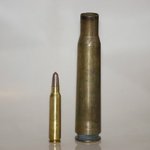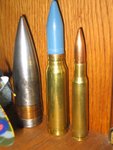Soundbreaker Welch?
Tech Sergeant
When a plane fires it's guns, all the casings fly off the bullets into the air through little holes beneath the guns. If the plane was say 5,000 feet in the air, those little casings have got to fall a long way. Even something tiny like that can have a powerful impact when it hits. And there are tons of them from even 15 seconds of firing.
Was any soldiers on the ground, or even civillians ever killed or injured by this tiny pieces of metal?
Just curious.
Was any soldiers on the ground, or even civillians ever killed or injured by this tiny pieces of metal?
Just curious.


